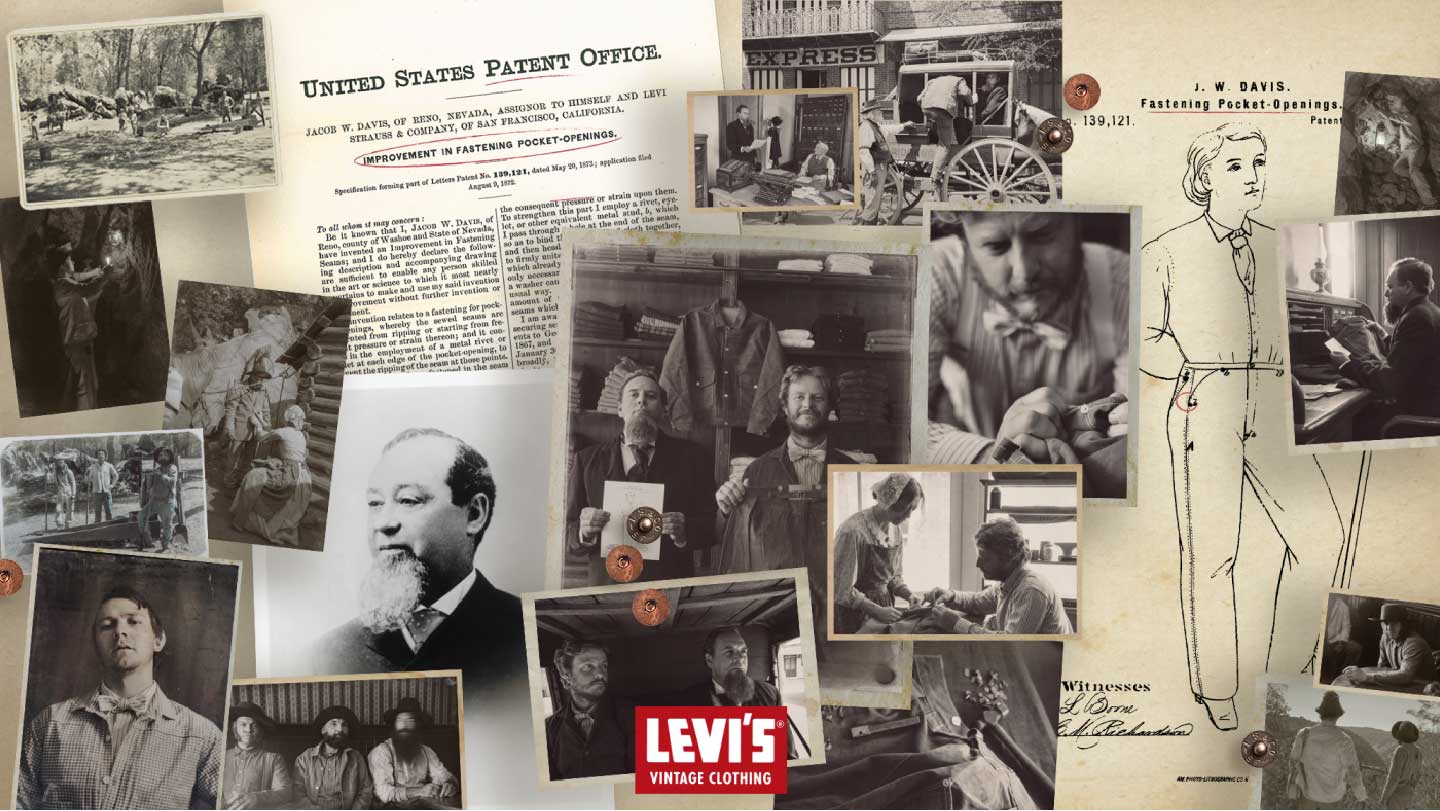
Our new collection, Birth of the Blue Jean, celebrates the 150th anniversary of the legendary patent obtained by Levi Strauss & Co. and tailor Jacob Davis. We sat down with Paul O’Neill, design director of Levi’s® Vintage Clothing, to get the story. Trust us, it’s riveting.
THE INSPIRATION
In the late 1800s, work on the farms, ranches, railroads and gold mines of the American West was heavy, dusty, grimy and sweaty. Men wore pants that often split at the pockets and other stress points—nowadays known as the dreaded “blowout.”
Jacob William Davis, known as “J.W,”—a tailor and would-be inventor from Riga, Latvia working in Reno, Nevada and specializing in making tents and wagon covers—had the idea of placing rivets on work pants at these points of strain (yes, even the crotch). He wrote a letter to his fabric supplier Levi Strauss in San Francisco, ordering supplies and suggesting a patent partnership.
On May 20th, 1873, Jacob Davis and Levi Strauss & Co. secured a U.S. patent—No. 139,121: for “an Improvement in Fastening Pocket Openings”—and the riveted blue jean was born. Thanks to their new near-indestructibility, Levi’s® became the clothing of choice for the rugged, hodgepodge band of workers, outcasts, entrepreneurs and outlaws building America’s future.
In partnership with Levi Strauss, Jacob Davis had finally succeeded in inventing something the world could use. It was a legendary collaboration, and Davis stayed on as factory manager at Levi Strauss & Co. for the rest of his years.
“IN MY RESEARCH FOR THIS COLLECTION, I LEARNED THAT LEVI STRAUSS WORE STRAW BOATER HATS AND HAD A GOOD SENSE OF HUMOR.”
—PAUL O’NEILL, DESIGN DIRECTOR, LEVI’S® VINTAGE CLOTHING
Levi Strauss, by the way, was originally from a town at the southern end of Bavaria called Buttenheim (Old German for “end part” + “home”), fateful perhaps for the man whose name would become synonymous with the world’s most iconic rear view.
THE CLOTHES
“This collection features Stitch-for-Stitch reproductions of some of the earliest garments in Levi's® Archives ever, including the 1870s Duck Closed Front Jumper and the 1870s Duck Waist Overalls. Previously, our oldest confirmed leather patch was from post-March 1875 and had the “re-patent” line of text. We always knew there was an earlier patch, but had never been able to identify the full text on it. When we started to study this pair, we could tell it was an earlier patch because it didn't have the re-patent text on it, but we couldn't fully read everything on it either.
“Tracey Panek, our historian, took a trip to the Smithsonian, where they have a pair of Levi’s® cotton duck pants that we donated in the 1960s, and she photographed the patch. So now we had the Smithsonian patch, the post-1875 patch, and this patch. When we put the three together, we could finally fully decipher all the information on the older patch and confirm that there was no re-patent text, which brings us to the conclusion that these garments are pre-1875. In my 14 years researching Levi’s® pieces, this was a huge discovery. For the first time ever, we could date something to pre-1875 with clear evidence. That's very cool, and it makes me really excited about these pieces.”
“THIS PAIR OF OVERALLS HAS NO BRANDING ON THE RIVETS OR BUTTONS, AND NO ARCUATE. IT’S CERTAINLY ONE OF THE OLDEST PIECES IN OUR ARCHIVE.”
—PAUL O’NEILL, DESIGN DIRECTOR, LEVI’S® VINTAGE CLOTHING
WHAT THE DUCK?
The difference between duck and denim
“Duck is a canvas, which is a one-by-one weave—one over, one under, one over—so when you look at it, you see these perfect little squares. Denim is a three-by-one weave—over three, under one, over three, etc. This is then offset in the next row and that's how you get the diagonal twill, which gives it a different character from the canvas. The warp thread is indigo and the weft thread is natural, so when you roll up your jeans, you get an ecru cuff.”


